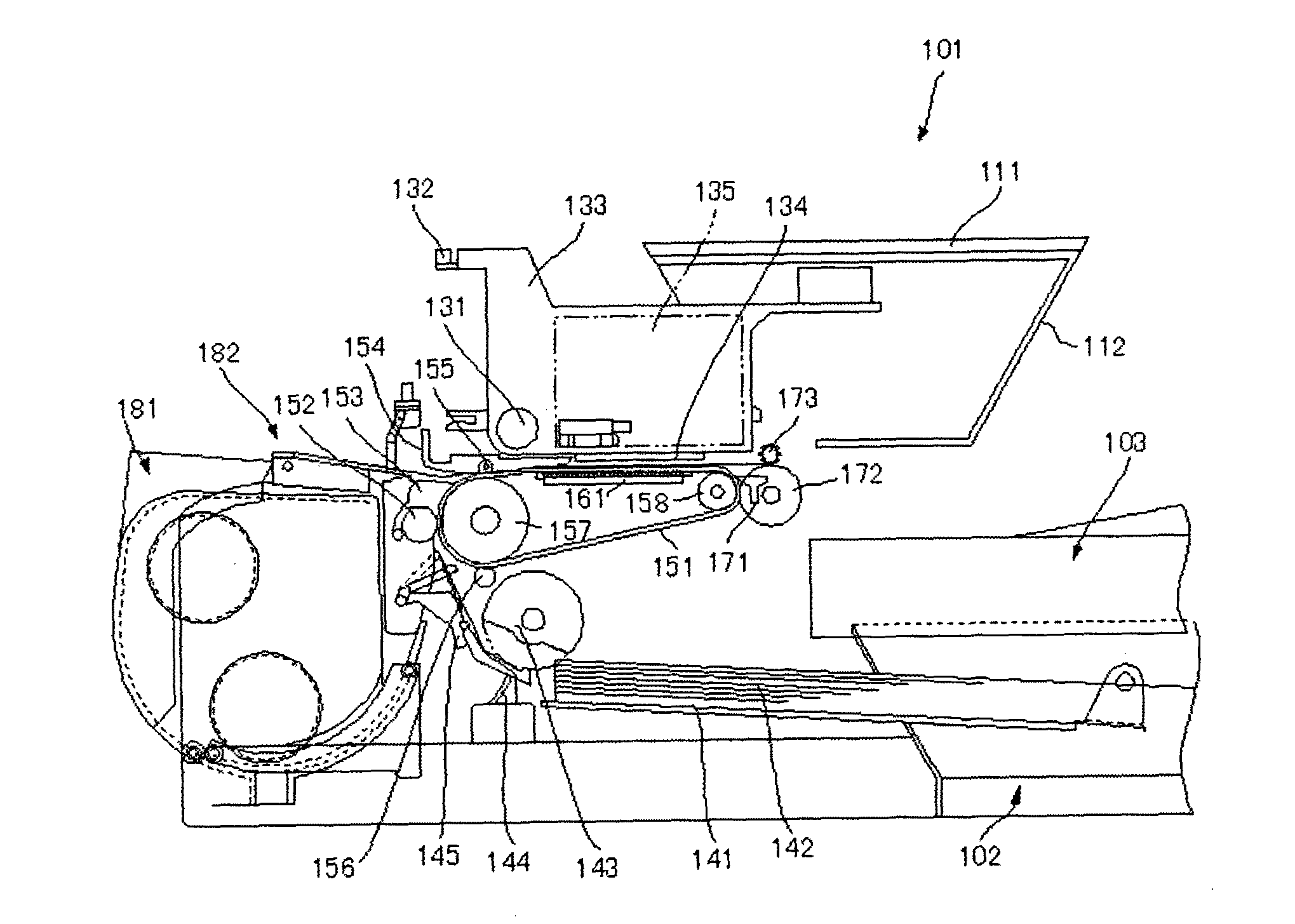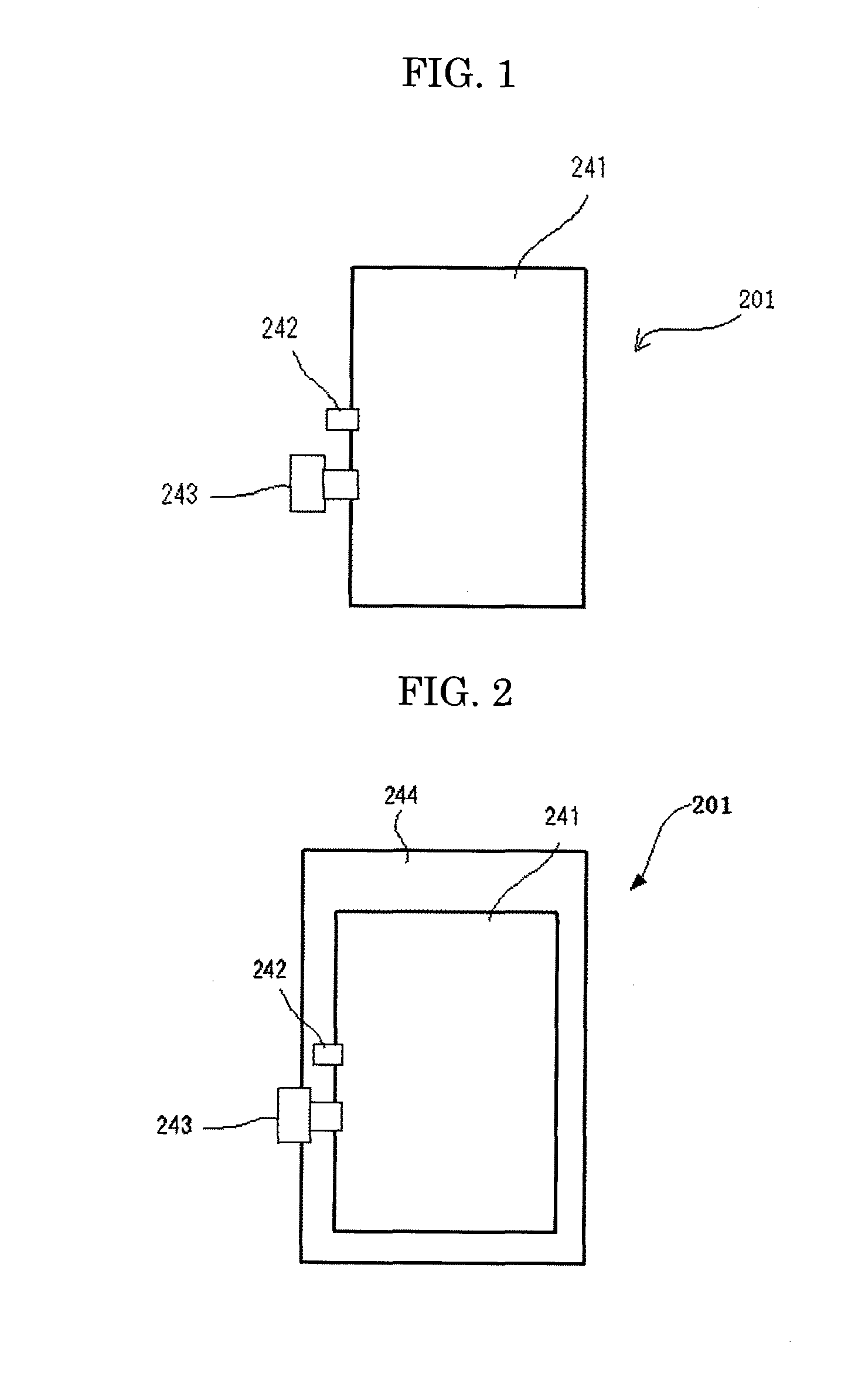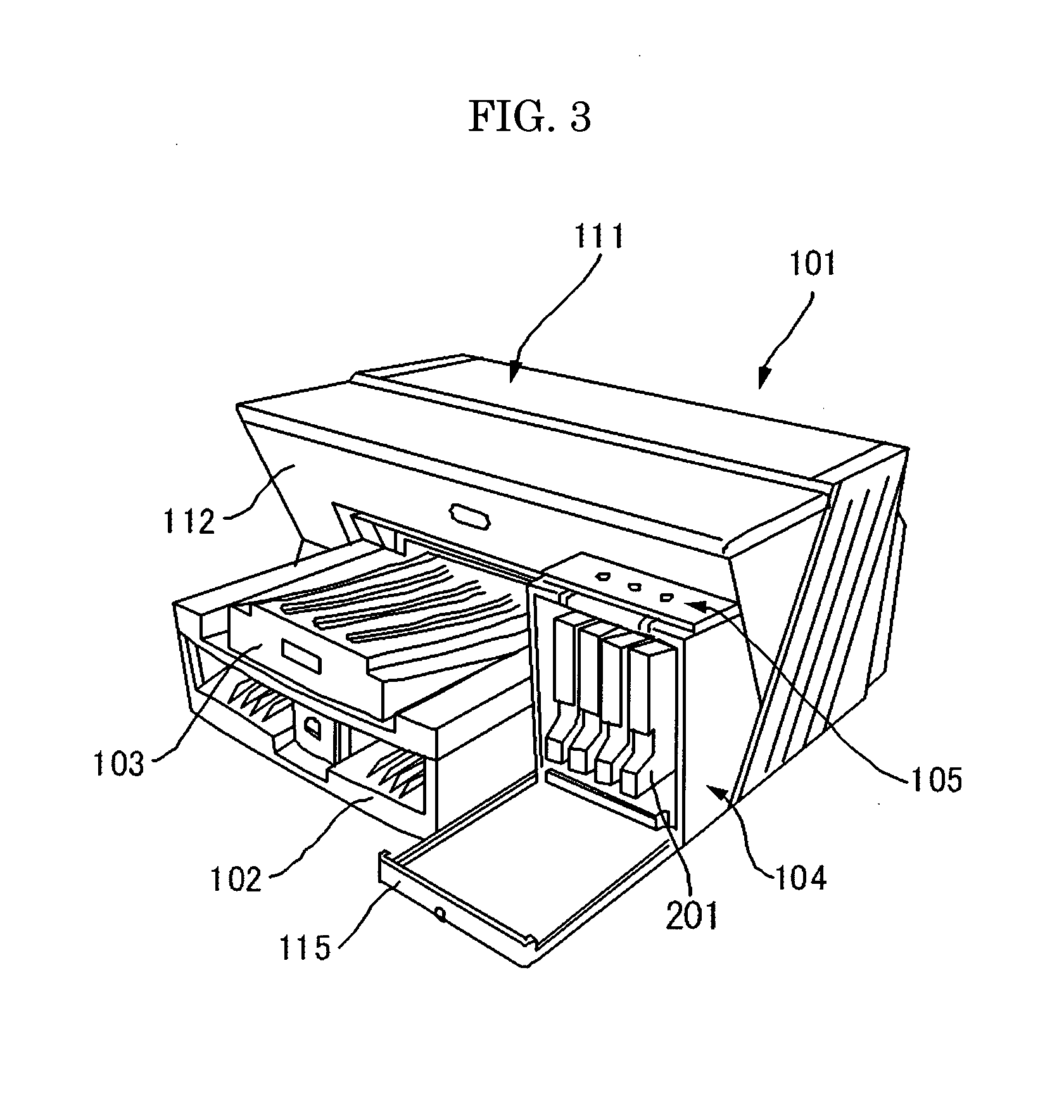Inkjet ink, inkjet recording method, and inkjet recording device
- Summary
- Abstract
- Description
- Claims
- Application Information
AI Technical Summary
Benefits of technology
Problems solved by technology
Method used
Image
Examples
first embodiment
(1) In the first embodiment, the colorant contains a dispersion liquid containing a pigment (may also referred to as “self-dispersible pigment” hereinafter), which has at least one hydrophilic group on a surface thereof, and exhibits dispersibility in water without a dispersant.
second embodiment
(2) In the second embodiment, the colorant contains a polymer emulsion (an aqueous dispersion liquid containing polymer particles each including a pigment) in which a water-insoluble or poorly soluble pigment is contained in each polymer particles.
[0099]As the pigment, an organic pigment, or an inorganic pigment can be used. Note that, the colorant may contain a dye in combination with the pigment for the purpose of adjusting the color tone, as long as the dye does not degrade the weather resistance of the resulting ink.
[0100]Examples of the inorganic pigment include titanium oxide, iron oxide, calcium carbonate, barium sulfate, aluminum hydroxide, barium yellow, cadmium red, chrome yellow, and carbon black. Among them, the carbon black is particularly preferable. Examples of the carbon black include those produced by the conventional methods such as a contact method, furnace method and thermal method.
[0101]Examples of the organic pigment include an azo pigment, polycyclic pigment, ...
production example 1
[0363]A 300 mL-separable flask equipped with a stirrer, a thermocouple, and a nitrogen-inlet tube was charged with 19.828 g of N,N-dimethylacryl amide and 14.824 g of 1-butanol, and the resulting mixture was stirred while introducing the nitrogen gas into the flask. Subsequently, 0.338 g of sodium t-butoxide was added to the flask, and the resulting mixture was allowed to react at 35° C. for 4 hours. Upon completion of heating, 150 mg of phosphoric acid was added to the reaction solution, and the solution was then homogenized, followed by leaving to sand for 3 hours. The solution was then filtered to remove precipitates, and unreacted products were removed by an evaporator. The yield was 30.5 g (yield: 88%). The obtained material was subjected to the measurement of the spectrum of 1H-NMR, and peaks were observed at 0.95 ppm (3H), 1.3 ppm (4H) to 1.5 ppm (4H), 2.4 ppm (2H), 2.9 ppm (6H), 3.4 ppm (2H) and 3.7 ppm (2H). It was found from these results that the obtained material was the...
PUM
| Property | Measurement | Unit |
|---|---|---|
| Temperature | aaaaa | aaaaa |
| Temperature | aaaaa | aaaaa |
| Fraction | aaaaa | aaaaa |
Abstract
Description
Claims
Application Information
 Login to View More
Login to View More - R&D
- Intellectual Property
- Life Sciences
- Materials
- Tech Scout
- Unparalleled Data Quality
- Higher Quality Content
- 60% Fewer Hallucinations
Browse by: Latest US Patents, China's latest patents, Technical Efficacy Thesaurus, Application Domain, Technology Topic, Popular Technical Reports.
© 2025 PatSnap. All rights reserved.Legal|Privacy policy|Modern Slavery Act Transparency Statement|Sitemap|About US| Contact US: help@patsnap.com



